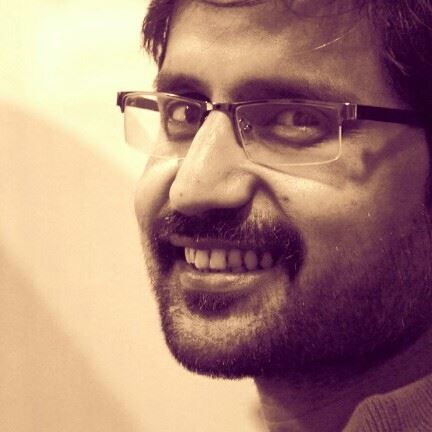Hapless villagers in UP’s Barabanki barely survive in tents, waiting for govt’s helping hand
Gaon Connection team visited the flood-affected villages of Uttar Pradesh’s Barabanki district and found village roads, and houses there, submerged.

Kushal Mishra and Virendra Singh
Seeing the Gaon Connection team wading through knee-deep water, and one of us holding a camera, villagers in Uttar Pradesh’s Barabanki district looked at us in hope. The village roads, and many houses, were submerged.
In Ramnagar tehsil’s Bilhari village, we met Parmanand, resting on a half-submerged cot outside his water-logged house. Parmanand, 55, is among those who chose to live in the village despite frequent floods.
“When the Saryu river washed away our part of the village in 1983, we moved to another place within the village. That place was flooded in 1992 and we relocated again,” he told Gaon Connection. “I built this house in 2003. It has been seventeen years in Bilhari village but, I have spent my whole life dealing with floods” he lamented.
The only sight behind his house is of floodwater. Beneath the water is acres of farmland with ruined paddy and mentha. “Wheat, paddy, all that I had sown are gone. Every farmer here would have suffered a loss of at least Rs 50,000,” Parmanand said.
“This time, we were hit from all sides – first the coronavirus lockdown and then the floods. There is no help from the government at all,” he complained.

This area, about 80 villages falls in Ramnagar tehsil of Suratganj block. Parmanand said the Saryu river known as Ghaghra in eastern UP, flooded at least 25 villages so far. Many families from these villages are living in tents built on the embankment. These tents, in long rows, on both sides of the embankment provide shelter to the villagers whose houses were submerged.
The situation in Kanchanpur village was not different. The villagers have been demanding a bridge connecting Bahraich and Barabanki for years. They believe the bridge will provide relief from the recurrent floods. “The bridge will make movement easier and it will control the land erosion due to the river. But, the officers do not come to take a look at all,” Anil told Gaon Connection, sitting in a chair outside his house, paying no heed to the waterlogging around him.
“Neither my paddy field nor my nursery was spared by the floods. I had to procure paddy from a village situated on the other side of the embankment,” Suresh Awasthi of Madraha village, holding paddy in his hand, told Gaon Connection.
Kodhari village, adjacent to the embankment, was surrounded by water, making it accessible only via boats. About 40 families here have been rescued and moved to the tents on the embankment. Some families are still in the village.

Gaon Connection team reached the village in a boat and found many abandoned houses and a few trapped villagers. One of the houses belonged to Anuj, and we found him almost floating outside his house.
When asked why he hadn’t left for the embankment, Anuj explained: “There is only one boat in the village. My whole house is flooded. Children will adjust but older people in the house also have to attend nature’s call. Besides, there is the problem of food and animal feed.”
Sridevi, who reached the tents from Kodhari, was sitting with other women from her village. Sridevi shared Anuj’s anger with the government and its apathy towards the flood victims. “What help? The ration we get lasts only 10 days. People’s farms have drowned and now we have to suffer as long as there is a flood,” she said.
“I have faced floods since birth, spending three months each year on the dam and living here. Before building embankments, the situation was not as bad,” Sridevi noted.

Sudhir Kumar is also living with his family on the same embankment. “My house was washed away in the floods of 2008 and I could not rebuild it so far. The five-six bigha land I owned was also washed away,” he said. “Now I am simply passing my days here on the embankment. Relief items do not reach everyone. Only we know how we are surviving,” Sudhir sighed.
The distance of these villages near the embankment is about one and a half to two kilometres from Saryu River. People from dozens of villages like Kanchanapur, Hetamapur, Kedaripur, Kodhari suffer not only from floods every year but also thousands of acres of crops of farmers in these villages are also damaged due to recurrent flooding.
Standing on the embankment one can easily note the sharp contrast between the two sides—one side where the green crops of the farmers are seen flourishing and the other side that has swamped villages with ruined crops. Many villagers from affected villages have packed their belongings and have moved away from the villages to stay in the tents at the embankment.
“Facing floods maybe in our destiny but the government’s apathy is also partly responsible for our suffering. The river would have been contained had the bridge been made,” Anil Tiwari, a resident of the flood-affected village of Kedaripur told Gaon Connection.
Destiny or administrative failure – these villagers face recurrent flooding by the Saryu River. Nevertheless, they persist, hoping and praying for the day when some government would come to their rescue.

